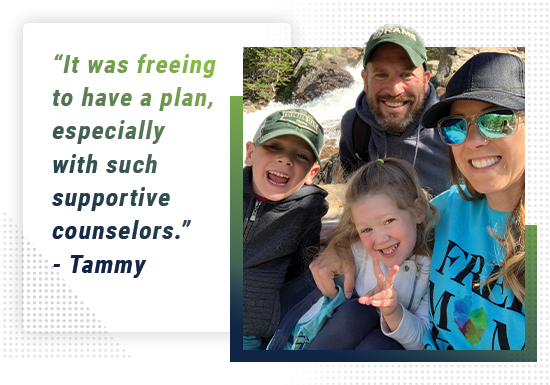Affordable Housing Options Help Minimize Student Debt
- February 7, 2022
Looking to minimize student debt?
One option is to explore both on- and off-campus housing options.
Taking the time to look for affordable housing can pay off. A recent College Board survey shows that at public 4-year institutions, on-campus housing can expect to cost an average of $11,451 annually for room and board, with off-campus renters averaging $10,781.

Talk to A Financial Counselor
Housing decisions affect the total amount of student debt a borrower will take on over the course of a college career. Teaming with a resource like GreenPath, a trusted national nonprofit financial counseling agency helps you understand the most affordable options.
Talk to An Expert
Housing decisions affect the total amount of student debt a borrower will take on over the course of a college career. Teaming with a resource like GreenPath, a trusted national nonprofit financial counseling agency helps you understand the most affordable options.
For most borrowers, student loan funds are available to be used for on- or off-campus housing.
Once tuition and fees are paid at the start of the semester, the educational institution applies any remaining funds to the borrower through a direct deposit to the student’s banking account.
The remaining loan funds are usually disbursed after the start of the academic year.
Highlighted here are some considerations of on and off-campus housing options to get a true picture of what makes sense for each person’s specific situation.
On-Campus Housing Options
Dorms, university apartments, university co-operative living, married housing, learning communities and other on-campus sanctioned choices mean students are in the heart of social and academic life.
You’ll have a clear look at total housing costs before each semester to avoid unexpected surprises to a student’s budget. The up-front costs of on-campus housing include meal plans, which can be modified for the most affordable and flexible situation, as well as basic furnishings, and all utilities including Wi-Fi.
On-Campus housing options also include subsidized housing based on financial need. As an example, some community colleges participate in Single Stop USA, a program that helps low-income students overcome barriers to success and includes housing support. Check with the institution’s admissions advisor for information about the school’s options.
Off-Campus Housing Options
Off-campus housing options include private homes, apartment buildings or other properties that usually require a 12-month lease. Upfront costs should be considered such as application fees and security deposits. Renters can expect to put down the equivalent of 1-2 months of rent when signing the lease. In addition, students might have to sublet over the summer months, which could be more inconvenient than a shorter lease – and perhaps more expensive in the long run.
Renters typically are responsible for utilities, such as internet, water, and electricity. Rates vary by proximity to campus, and an apartment’s size also affects the cost of utilities.
Apartments or rental homes are more affordable when located outside the campus, but savings might be offset by commuting costs since there will be time and expense of commuting, gas, parking, insurance and other transportation costs.
You can make off-campus housing more affordable by signing a lease with roommates, but be sure to understand the terms, since some agreements are individual lease agreements.
Finally, when it comes to off-campus housing leases, watch for surprise expenses such as a background check fee. The fees might add up if a student applies for multiple rentals. Off-campus renters will also need to budget to set up house for items like kitchen supplies, linens, furniture and other housing-related expenses.
Home Free
While there is no way to be “home free” when it comes to student housing, selecting the most affordable housing option helps minimize student debt upon graduation.
Talk to A GreenPath Counselor
GreenPath Financial Wellness is a trusted national nonprofit with more than 60-years. Start a conversation with an expert.

